You are using an out of date browser. It may not display this or other websites correctly.
You should upgrade or use an alternative browser.
You should upgrade or use an alternative browser.
Articles
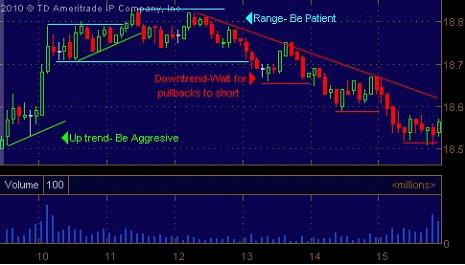
For active stock traders, having different strategies for different market conditions is a crucial factor. Trends emerge, fade, reverse and ranges develop, all playing out in ever broader trends and ranges, all within a single trading session. Thus, the trader is faced with a choice: trade one strategy and profit only at times that suit the strategy, or trade several strategies that allow them to trade profitably, in an array of market conditions. Different times of the day pose different opportunities and threats, and must be accounted for. Once several strategies have been adopted, it is crucial that the trader know when to implement each type of strategy.
Three Types of Trading Strategies
For day traders, strategies will generally...
Very few films capture the essence of life as a day trader. The pressure of walking the tightrope between profitability and looming losses is rarely captured in mainstream films. While movies such as "Wall Street" and "Boiler Room" glamorize the lifestyle of accumulating wealth by any means necessary, they do not capture the essence of actual trading in the trenches. These five movies illustrate key lessons every trader can take with them to understand more about their career.
1. "Rounders" - Money Management and Spotting Fades
This movie is a favorite among poker players, and it exemplifies the parallels that exist between playing poker and trading the markets. The two main characters literally represent the two sides that exist in...
It's the question at the tip of every aspiring day trader’s tongue: how much money can I earn from day trading?
Since most day traders do not disclose their trading results to anyone but the tax authorities, an exact answer to how much money an average day trader makes is impossible to answer. However, there are numerous sources of information, including reliable academic studies, that offer clues on average earnings. The majority of available information does not shed a positive light on day trading. The research typically indicates that, in fact, most day traders lose money.
Day traders make money by buying stock and holding it for a short period of time--anywhere from a few minutes to a few hours--before selling it off again. Day...
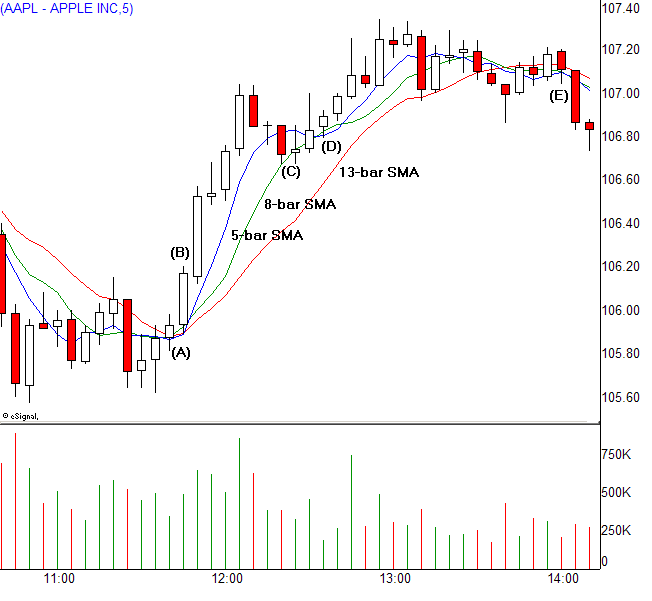
Day traders need continuous feedback on short-term price action to make lightning fast buy and sell decisions. Intraday bars wrapped in multiple moving averages serve this purpose, allowing quick analysis that highlights current risks as well as the most advantageous entries and exits. These averages work as macro filters as well, telling the observant trader the best times to stand aside and wait for more favorable conditions.
Choosing the right moving averages adds reliability to all technically-based day trading strategies, while poor or misaligned settings undermine otherwise profitable approaches. In most cases, identical settings will work in all short-term time frames, allowing the trader to make needed adjustments through the...
With the upsurge of investor interest in high-frequency trading (HFT), it is important for industry professionals to come up to speed with HFT terminology. A number of HFT terms have their origins in the computer networking/systems industry, which is to be expected given that HFT is based on incredibly fast computer architecture and state-of-the-art software. We briefly discuss below 10 key HFT terms that we believe are essential to gain an understanding of the subject.
Co-location
Locating computers owned by HFT firms and proprietary traders in the same premises where an exchange’s computer servers are housed. This enables HFT firms to access stock prices a split second before the rest of the investing public. Co-location has become a...
Algorithmic trading (or "algo" trading) refers to the use of computer algorithms (basically a set of rules or instructions to make a computer perform a given task) for trading large blocks of stocks or other financial assets while minimizing the market impact of such trades. Algorithmic trading involves placing trades based on defined criteria and carving up these trades into smaller lots so that the price of the stock or asset isn't impacted significantly.
The benefits of algorithmic trading are obvious: it ensures "best execution" of trades because it minimizes the human element, and it can be used to trade multiple markets and assets far more efficiently than a flesh-and-bones trader could hope to do.
What is Algorithmic...
There are a number of things that can impact an investor's entry (buy) into or exit (sell) out of a given stock and/or sector. Depending on the investor and his or her goals and investing time frame, the importance of timing the entry will differ. Obviously, the shorter the time frame the more important the entry; specific entries matter little to long-term (five years or more) investors.
That said, all investors should be aware of some of the more common market moving influences that can affect a stock's price. By becoming aware of these market traits, investors can make better entries and catch an extra percent or two in return.
Let's take a look at eight items that can materially impact the average day's trading.
1) Overseas...

Trying to pick an intraday top or a bottom in a market move can be dangerous, yet many traders are obsessed with trying to get in right at the bottom and out at the top. A common method is to forecast a bottom, place a bid and then watch in horror as prices continue to plummet, resulting in a larger loss than initially anticipated. Traders can get into emerging trends early and exit near the top, but a prudent strategy requires that we wait for the market to provide us with a signal - a sign that it is reversing - before we enter/exit our position. In this way, we can enter and exit at relatively good prices, but with the benefit of knowing what our risk is, and having a solid indication from the market that is has already turned...
Scalping, a subset of day trading, is a strategy that involves frequent entry and exit in a trade in order to realize small but multiple gains from the intra-day movement during the trading session. Traders who employ the scalping technique are called scalpers. Scalpers indulge in numerous trades during a day’s trading session with each position held for a very short span of time, ranging from few seconds to minutes. Scalping is not only used with stocks, but also with futures and forex.
With low barriers to entry in the trading world, the number of people trying their hands at day trading and related strategies such as scalping has increased. Scalping is not the best trading strategy for rookies as it involves fast decision-making...
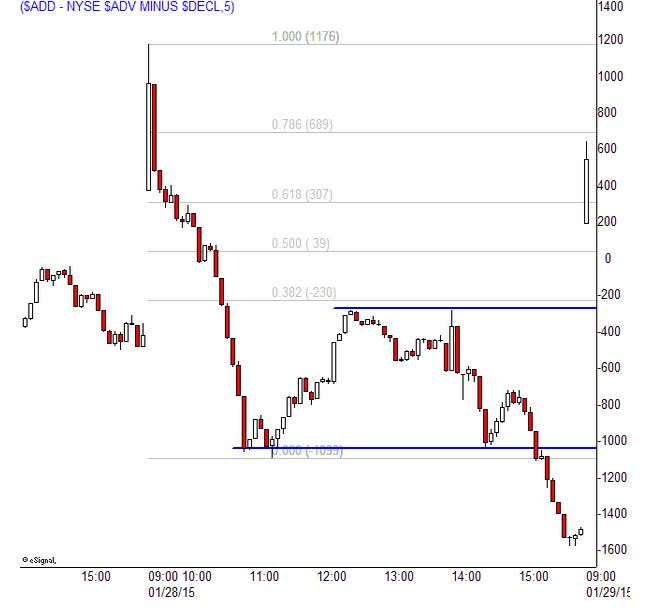
Tape readers have an advantage over chartists because they can interpret intraday data in real time, filtering pages of numbers into surprisingly accurate predictions on short-term price movement. This near-legendary market skill has additional perks, allowing them to measure emotional intensity of participants while they uncover the day’s leaders and laggards. In turn, these generate a broad trading edge that adds firepower to longer-term market strategies.
The basics of tape reading can be learned in a few minutes but the practice takes a lifetime to master, for three reasons. First, the market is enormously complex, requiring many years of observation to understand how individual parts affect the whole. Second, macro forces that...
You don't need to look to other traders, books, videos or courses to find a day trading strategy as with a bit of guidance you can develop day trading strategies of your own. One of the ways to journey into day trading strategy development is by using technical price or chart patterns. Price patterns are recurring themes you see day in and day out, which more often than not can lead to a certain defined outcome which you can capitalize on. Finding these pattern and ultimately developing a strategy for trading them will require five broad steps.
Money Management
Most successful trade traders risk less than one or two percent of their account on each trade. Your first step in developing a strategy is assessing how much capital you're...
Computer applications have made it easy to automate trading, especially for short term intensive activities like day trading, making the usage of trading software very popular. The debate continues on the profit potential which can be realistically derived from day trading activities, as brokerage and commissions are said to take away the major portion of available profit potential. It thus becomes very important to select the right day trading software with a cost benefit analysis, assessment of its applicability to individual trading needs/ strategies, as well as the features and functions you need.
Day trading is a time bound trading activity where buy or sell positions are taken and closed on the same trading day, with an aim to...
The prospect of making quick money lures many to the world of day trading. The participants in this game, besides professional traders, can be retirees, executives, teachers, small business owners, housewives, etc. who try and make a fortune through their computer screens. Remember, the profits which may draw you to day trading are virtual and it’s your trading style that can transform them into real gains--a daunting task, especially as a rookie.
There are rules for every game, even day trading! If you are a new player, it’s important that you are mindful of the basic set of rules. These rules are certainly not binding, but they can help you to make some crucial decisions and give broader guidelines.
1. Knowledge
“Knowledge is...
On the afternoon of May 6, 2010, the Dow Jones Industrial Average (DJIA) plunged 800 points in less than 20 minutes before recovering most of its losses, creating a new term in the financial lexicon – the “flash crash.” The Dow’s intraday drop of 998.5 points or 9.2% was its largest points decline on record, while its intraday swing of 1,010 points was the second-largest in the history of the index, exceeded only by a 1,018-point swing on October 10, 2008. While the Dow’s temporary swoon during the flash crash was a harrowing reminder of the market collapse after the bankruptcy of Lehman Brothers in September 2008, the culprit this time was not overwhelmingly bearish sentiment but something altogether different – program trading.
What...
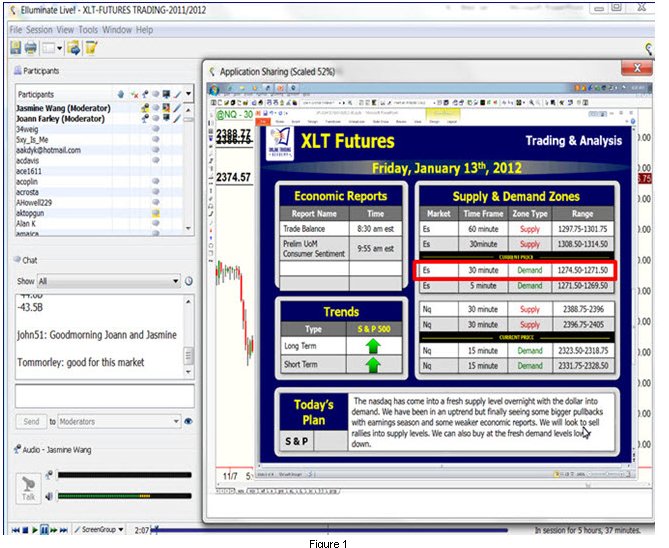
During my time on the floor of the Chicago Mercantile Exchange, I noticed many things that helped shape my thought process and strategy that I still employ today. I started on a very busy trading desk right next to the trading pits and my job was to facilitate institutional order flow. One of the many things I noticed was that most of the trading action happened very early in the day. Furthermore, institutional profits and retail trader losses happened at that same time, very early in the day. I realized that most of the time, when an institution was buying, there was a retail sell order on the other side of that trade and vice versa when the institution was selling, it would be to a retail buy order. This was clear insight into the...
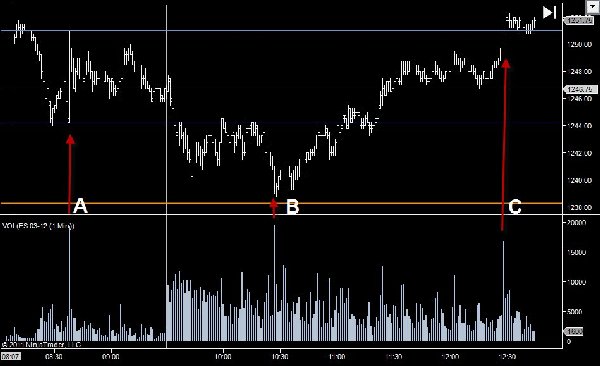
It’s common knowledge that no market moves in one direction for an extended period without ‘pulling back’. There are many methods of analysis that try to make sense of these moves and counter-moves, these methods mostly rely on price data alone to guess the start and/or end point of a pullback. In this section, we will look at the liquidity model and how liquidity makes pullbacks inevitable. This isn’t an exercise in market theory; this knowledge will help you jump on board moves at the right time. It is not easy to sell into a rising market but if you understand the liquidity model, you will understand that at times, the market is rising because of a lack of sell side liquidity and NOT because buyers are jumping into the market.
In...

Day trading involves isolating the current trend from market noise and then capitalizing on that trend through well-timed entries and profit taking. These factors play a crucial role in managing potential profit expectations and risk. Trading has many challenges, but by sticking to certain guidelines success is more likely. Since the market always moves in waves, on all time frames, rules can be created for exploiting this phenomenon. The following five rules will help traders find high profit potential, low risk, intra-day trades.
1. Trade only with the current intra-day trend
Trading with the trend allows for low risk entries and high profit potential if the trend continues. Intra-day trends do not continue indefinitely, reversals do...
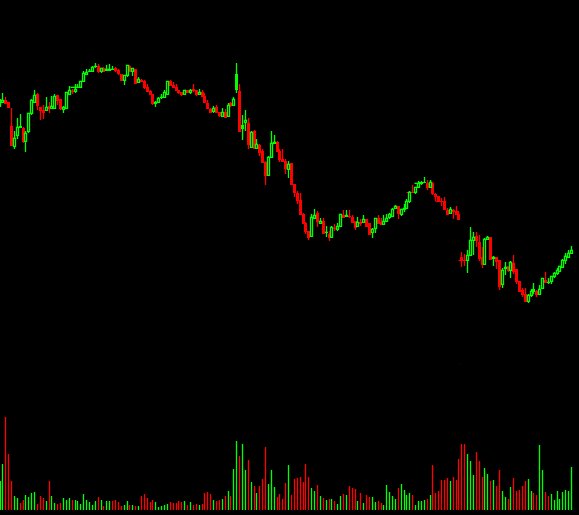
9:30 AM New York Time. The US equity market just opened. Orders start flying through the time and sales window. The first candlestick is forming on the 5 minute chart. You are sitting there, anxious to place a trade, with your finger on the trigger ready to grab that $50,000 position.
In the background, CNBC is on and it just so happens that they are talking about the stock you want to trade. They just mentioned an analyst upgrade, which you think explains the large green candle that just closed. You have your news source open on one of your other monitors, and you glance over to see positive news coming out from the company in pre-market. You notice that the stock is soaring higher, up about 1.5% already today.
As if this wasn't...
